Text
Monsoon Wedding(2001) Film Analysis
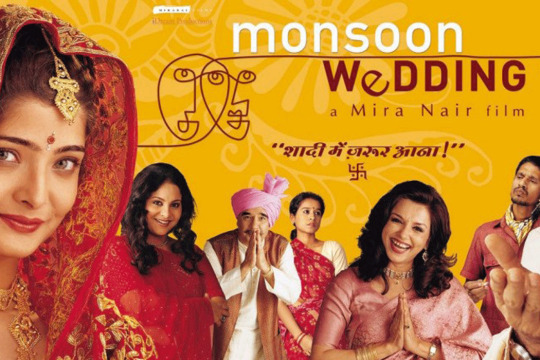
Monsoon Wedding, a 2001 comedy-drama film directed by Mira Nair, unfolds in Delhi and revolves around the Verma family as they meticulously plan an extravagant wedding for their only daughter. Aditi, the daughter in question, is set to enter an arranged marriage with Hemant Rai, a close family friend from Texas, whom she has only known for a few weeks. The central storyline explores the challenges and chaos that come with orchestrating an elaborate and costly wedding within a modern Indian family. Lalit Verma and his wife Pimmi are the parents. They take charge of the wedding arrangements, assisted by Pimmi's sister Shashi, her husband C.L, and their son Rahul, who have arrived from Oman. PK Dubey is the wedding planner who is making all of the calls, ordering the materials while simultaneously setting up the venue with his workmen. Alice is the Verma family’s maid who helps around with household chores and wedding arrangements. Ria verma is the daughter of Lalit's late older brother, she and her mother were taken in by the Lalit’s family after her father passed.
Applying the critical theory of realism to Monsoon Wedding involves examining how the film portrays reality, particularly in terms of social dynamics, relationships, and the cultural context of contemporary India. Realism, as a critical lens, often seeks to represent life as it is, emphasizing the everyday experiences of ordinary people.
Mira Nair employs social realism by presenting a candid and unembellished view of Indian society. The film explores the complexities of familial relationships, addressing issues such as class differences, patriarchal norms, and the impact of globalization.
Early in the film, we are introduced to Aditi as she pays a visit to Vickram, a married man who she is romantically entangled with. Their passionate moment in his dressing room is abruptly interrupted by a staff member, but they promise to see each other again. In the subsequent scene, Aditi confides in her cousin, Ria. Here, it is revealed to us that she is the daughter who is engaged to another man. As the eldest daughter of the Verma family, Aditi feels the weight of cultural expectations dictating that marriage is the only means of leaving the familial home.

Despite her anticipation of marriage, Ria, the voice of reason, advises Aditi against such a hasty union, especially if it is motivated solely by a desire to escape Delhi rather than genuine love. Throughout the film, Aditi persistently tries to contact Vickram, and their meeting before her wedding takes a surprising turn. The couple drives off into the night, seeking solitude, but their intimate moment is interrupted by menacing police officers. This incident serves as a revelation for Aditi, prompting her to realize the shame of her relationship with Vickram. She chooses to end it altogether and takes the courageous step of confessing the truth to her fiancé, Hemant. Aditi's character emerges as remarkably complex—she continued her relationship with Vickram knowing he was still married to another woman. Despite these entanglements, Aditi exhibits honorable qualities by opting for transparency, revealing the truth to Hemant even when Ria attempts to dissuade her. This adds depth to Aditi's character, showcasing a blend of vulnerability, strength, and a commitment to honesty in the face of challenging circumstances.
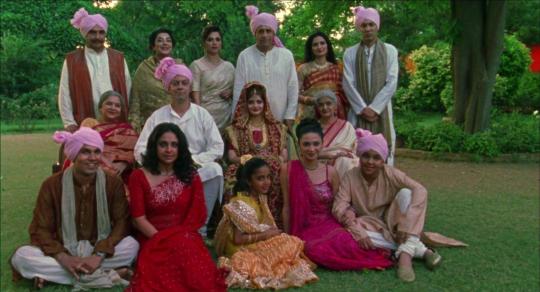
Lalit, the patriarch of the family, is wholeheartedly dedicating himself to ensuring that his daughter's wedding is nothing short of perfect. Despite this unwavering determination, there's a strain on his pride as he finds himself compelled to seek financial assistance from others to fund the elaborate wedding. One of the people he relies heavily on is his brother-in-law, Tej. A few days prior to the engagement, Tej comes from the US to join the family. Tej. As he has supported the Verma family financially for years, he offers to help Ria financially so she can study at university in the U.S. However, despite Tej's generosity, Ria is uneasy around him and chooses to keep her distance. We find out later that Tej had molested her when she was a child, and he intended to do the same with their younger cousin, Aaliyah. Ria storms out after no one believed her until Lalit went to bring her back. In that moment when the family was all together again, he chose to sever his ties with Tej to protect Ria, who he has treated like his own. Tackling social issues such as sexual assault was a major move this film made, it only adds on to the depth of the film.

PK Dubey, the eccentric wedding planner has always wondered when he would have a wedding of his own. When he meets Alice, he is immediately smitten. They end up forming a bond of their own, a love that Nair describes as “magical.” This is something that Monsoon Wedding perfects, they are not a part of the Verma family, yet their love story is a center of focus in the film. In their scenes together, we often see marigold flowers, which are important in Indian weddings. Marigolds represent the sun, symbolizing brightness and positive energy. They are also associated with Lord Vishnu and Goddess Lakshmi, who are considered an ideal couple in Hindu mythology. The recurring flowers foreshadow their marriage at the end of the film. Nair masterfully weaves these stories together in the film so we can view them as they are, not a function in a plot but a moment we can observe as it is.
There are other smaller stories that are incorporated throughout the narrative as well. Maya Verma, a cousin on Aditi’s father’s side, has a budding relationship with Rahul, her cousin on her mother’s side. Even in this small fling, we see issues arise such as cultural differences. Maya gets angry with Rahul who will not perform a traditional dance with her at the engagement party and calls him a “bloody foreigner” for not wanting to participate. For context, Rahul’s family moved to Oman and he has been living in Australia for a few years. Lalit throughout the movie has added onto this, constantly calling Rahul a lazy idiot. There is also tension with the youngest son of the Verma family, who Lalit thinks is “too flamboyant.” The movie addresses issues of the objection to femininity in men, which is why Lalit tries to force his son to go to boarding school.
Realism, in the context of cultural representation, demands authenticity in the portrayal of customs and traditions. Mira Nair excels in capturing the vibrancy and diversity of Indian culture, presenting a visually authentic depiction of a Punjabi wedding. From the rituals to the music, costumes, and language, the film immerses the audience in the cultural backdrop of Delhi. The attention to detail in representing the sights and sounds of a traditional Indian wedding contributes to the film's realist aesthetic.

Realism often involves the creation of multi-dimensional characters whose experiences resonate with the audience. In Monsoon Wedding, characters like Aditi, Lalit, and P.K. are portrayed with depth, each carrying a set of personal struggles and aspirations. The film humanizes its characters, depicting their flaws and vulnerabilities alongside their strengths. This nuanced characterization contributes to the authenticity of the narrative, making the characters relatable and reflective of real-life individuals
Realist cinema often focuses on the mundane aspects of everyday life. Monsoon Wedding incorporates scenes that showcase the ordinary activities of the characters, from preparations for the wedding to casual conversations and family gatherings. These scenes contribute to the film's realism by grounding the narrative in the routines and rituals of daily existence.
Realism often involves a critical engagement with social issues. Monsoon Wedding subtly addresses societal challenges such as the pressure of societal expectations, the intersection of tradition and modernity, and the impact of economic disparities on interpersonal relationships. The film's exploration of these issues adds a layer of social critique, aligning with the realist tradition of examining the complexities of society.
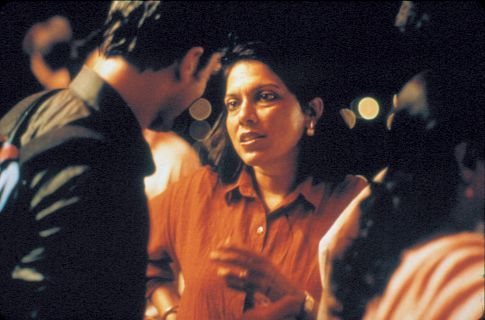
In conclusion, Monsoon Wedding aligns with the critical theory of realism by authentically portraying the social, cultural, and emotional realities of contemporary India. The Verma family's interactions, both within themselves and with the outside world, reflect the social realities of contemporary India. The characters' struggles, aspirations, and conflicts are portrayed with a degree of authenticity that aligns with the principles of social realism. Through its attention to detail, nuanced characterization, and engagement with social issues, the film creates a narrative that reflects the complexities of everyday life, making it a compelling example of realist cinema.
1 note
·
View note
Text
Critical Film Analysis: Past Lives

“Past Lives” is a romance/drama released in June 2023, written and directed by Celine Song. The film follows the trajectory of two people’s lives who were each other’s first love as children. Nora, played by Greta Lee, moves with her family as a kid from South Korea to Canada. Before moving, she struck up a romantic relationship with Hae Sung, played by Teo Yoo. The film is divided into three parts: both the characters’ childhood, young adult, and adult lives. Following this narrative structure shows how these two characters grew apart and together in different ways throughout their lives, their upbringings in different countries affecting their goals and realities. “Past Lives” is an easy-to-follow narrative: the audience can see how choices in the beginning of the character’s life led to where they are now. For example, Nora’s character is immediately shown as intelligent and headstrong, and someone who wants to be famous and successful. Hae Sung is shy but still very smart - he and Nora compete for the top grade in their class. When Nora is in New York as a young adult, it’s clear she is working towards being a playwright.
At the end of the film, when the two characters reunite after not seeing each other since they were children, they are having their “what if” conversation.
In Christian Metz’s essay “Semiotics of the Cinema” he writes about the relationship between the sign and the signifier; that cinema is a “system of signs” and understanding the signs in a film is crucial to understanding its story. In “Past Lives” the signs of the cultural differences of Nora and Hae Sun immediately tell the audience of their inevitable different fates. Even though there are signs of them being in love with each other through the cinematic language – the steady gazes, body language, the dream-like intimate feel – the audience understands they will not end up together.
That is one of the masterful parts of Song’s filmmaking: she creates undeniable chemistry but these characters have an unavoidable conflict separating them.
Metz also touches on narrative structure as a way for audiences to have an understanding of film. By following the characters through critical moments in their lives, audiences have a deeper understanding and empathy for them. Since we saw Nora and Hae Sun together as children, we obviously want them to be back together when they reunite as adults. But, they are different people now. It’s clear that they can not be together and the audience knows that too. This dynamic adds to the theme of the film - the pain and struggle of not knowing if the path you are taking is necessarily the right one, but having to trust your instincts and respect all the hard work it took you to get there. Nora is a playwright who, by the third act of the film, has a husband and an established life in New York. It is clear that she has doubts but knows that she has worked too hard to establish this life to give it up for her first love. Hae Sun followed a traditional Korean route: he went into the military and lives with his family. He did not move on from his love of Nora and it is clear he feels lost and is going along with the flow of what has been laid out for him.
In the two following clips, we can see the relationship between Nora and Hae Sun very clearly. The first clip is an interaction between the two characters after reuniting. The second clip will be a clip from an interview explaining the difference between the Western and Eastern cultural ideas of love and how that is portrayed in Nora’s relationship with her husband versus Hae Sun.
Director Celine Song was also the screenwriter for the film, a feat that she has received a lot of recognition for. Even though they were raised in different worlds, Nora and Hae Sun are very relatable characters. The film forces its audience to think back on different choices they made in their lives and reflect. This coincides with Metz’s “Identification and mirror stage” in narrative film, which is a psychoanalytic concept, particularly Jacques Lacan's mirror stage, to discuss how viewers identify with characters on screen. He suggests that the cinematic experience involves a form of identification with the characters, and this identification is crucial for emotional engagement.
Maybe some could relate to having to balance two cultures – whether that be Eastern and Western or something else – and realizing the difference between how you act with different people in your life.
The emotional engagement from the audience is clear - the film has been widely received as intimate, relatable, smart, and one of the best films of 2023. In a review from the New York Times, film critic Manohla Dargis wrote: “The movie’s modesty — its intimacy, human scale, humble locations and lack of visual oomph — is one of its strengths. The characters live in homes that are pleasant yet ordinary, the kind that you can imagine hanging out in, the kind you want to hang out in.” (Dargis 2023)
The audience’s desire to be close with Song’s characters coincides with Metz’s theory on the viewer’s role in a film. Metz emphasizes the active role of the viewer in interpreting the signs presented in a film. He suggests that viewers engage in a process of decoding and making meaning, and this process is influenced by cultural and contextual factors. Every audience member could take away something different from “Past Lives,” as each audience member would resonate with something different in its story – for example: the immigration story, cross-culturalism, thinking about one’s life and wondering what would have happened if other choices were made, reflecting on past life experiences or past loved ones, etc.
“Past Lives” is definitely a special film. The performances were impeccable, the story was simple yet its characters and environment make everything complex, and its direction and screenwriting were extremely memorable. It’s clear that Song had a specific directorial and writing vision that came through as a beautiful story thanks to the structuralism in the film explained through Metz’s essay.
Citations:
Metz, Christian. 2009. Semiotics of the Cinema. Film Language. 7th ed. New York. Oxford. OXFORD UNIVERSITY PRESS.
Dargis, Manohla. 2023. ‘Past Lives’ Review: Longing for a Future. New York, New York. The New York Times.
@theuncannyprofessoro
2 notes
·
View notes
Text
The Watermelon Woman: Queer representational strategies as possibility

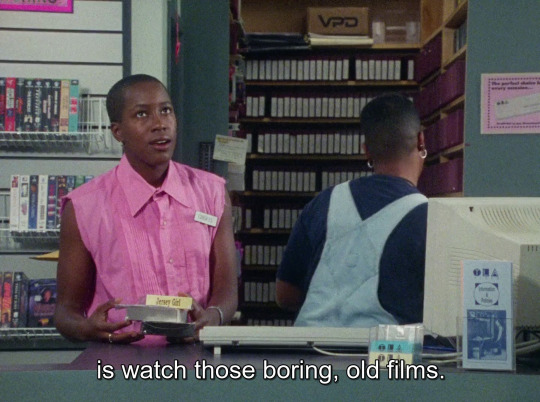
Cheryl Dunye’s The Watermelon Woman (1996) made history as the first feature film written and directed by a Black lesbian–but the film knows this and extensively explores its appellation as the “first of its kind,” a title Dunye simultaneously treats with frustration and reverence. It’s strikingly self-aware, funny, and inventive, a semi-autobiographical story about Cheryl, a video store clerk and chronically single filmmaker who decides to make a documentary on a mysterious Black actress from the 1930s pigeonholed into playing “mammy” roles who appears in the credits of a film called Plantation Memories simply as “The Watermelon Woman.” It’s a movie about movies! “I am a Black lesbian filmmaker who's just beginning,” Cheryl says, and here the thesis of the movie exhumes itself. The text demonstrates a preoccupation with the power of identity as a representational strategy through imagery and insists on its existence, the Black lesbian gaze resisting hiddenness behind the camera and crafting a visible narrative powered by the excavation of archival memory, the straddling of truth and representations of truth, of real and imagined. Dunye’s filmmaking mirrors her own life while the fictionalized version of herself seeks her own image in the black-and-white static of footage nearly lost to history. The Watermelon Woman chronicles the myriad of interconnected dynamics between art and real life–its awareness of the ways it is speaking about and to itself is demonstratively pointed, with Cheryl often speaking directly to the camera about her project and desire to tell Fae’s story.

Fae Richards, the eponymous Watermelon Woman, symbolizes the Black queer archive that future generations of Black queer filmmakers like Cheryl strive to hold within their canon, and as Cheryl interviews subjects for her documentary on Fae and digs through archives she finds proof not only of Fae’s existence but of her queerness¹. She discovers that Martha Page, the white director of Plantation Memories, and Fae were in a relationship, all the while navigating her own dating life, getting entangled with a white video store patron named Diana, much to her best friend Tamara’s dismay. The ways Cheryl’s relationship with Diana parallels Fae and Martha’s excavates the possibilities and challenges of “race relations” within queerness and the ways white lesbianism often possesses an objectifying curiosity with Blackness. The film’s theoretical standpoint as a piece of media that presents a representational theory of Black queerness pointing out gaping holes in the so-called canon is made imminent by some of its casting choices–cultural critic and infamous haver of weird opinions Camille Paglia appears as a parody of herself and a mouthpiece for white feminist film theory offering a misguided take on the “mammy” sterotype, and love interest Diana is played by Guinevere Turner, cowriter and star of the 1994 lesbian film Go Fish. The Watermelon Woman theorizes that sexuality and race are mutually constitutive and through the production and reception of representational imagery this interrelation is complicated by the relationship between the creator and the recipient of an image–Cheryl is a lover of film as much as she is a filmmaker and a large portion of her desire to tell stories about the complexity of being a Black woman who is many things at once comes from her desire to consume these stories.
Jack Halberstam’s “Looking Butch: A Rough Guide to Butches on Film” bifurcates queer imagery into “positive” and “negative,” necessarily locating “butch” as a visual identity located in media representations in one of two pathologies². Butchness in film is often leveraged to be emblematic of non-normative female sexuality in a way that is easily visually understood, and as a result, butch lesbians in film have more often than not functioned to be objects rather than subjects of inquiry. Halberstam posits that the debate around positive and negative images often returns to early feminist film criticism calling for “positive representations,” categorically rejecting depictions that could be received in their full complexity as anything other than “good.” Halberstam complicates the idea of a positive image by postulating that this desire for queer imagery imbedded with messaging that campaigns for itself places “the onus of queering cinema squarely on the production rather than the reception of images.” The Watermelon Woman explores how cinema is queered both through the production and reception of images; Cheryl watches Plantation Memories for the first time, she reads the queerness in it and it becomes a queer text because of her viewing, then when it is revealed that The Watermelon Woman and the film’s white director were in a relationship, her read is validated. Cheryl’s onscreen presence as a butch lesbian is overtly queer and her and Tamara’s open discussion of lesbianism as well as an intimate sex scene between Cheryl and Diana underscore this film’s goal of moving beyond the implicit in representation, further informing the lesbian lens with with Cheryl uses to analyze and interpret films like Plantation Memories.

Plantation Memories is not a real film, but it might as well be as it represents the startling politics of race films of its time where the white Scarlet O’Hara-type starlet weeps in the arms of the nurturing Black woman with such vigor that it’s hard not to believe in its existence. The consequence of the effects films like it produced continue to be felt in strategies of representation and Fae Richards does not represent an easily “positive” image of queerness–instead occupying a space in the troubling tradition of the racialized dominant images of Black women in film–yet Cheryl recognizes herself in Fae’s performance partially because it is so fraught. She identifies in her relationship with Diana a similar dynamic to Fae Richards and Martha Page, who only cast her lover in highly stereotyped and racially singular roles, where her lesbianism and Blackness are at slight odds with one another when in a relationship with a white lesbian who can relate to her based on only one of those central tenets and displays a voyeuristic and ultimately isolating interest in the other one. The Watermelon Woman argues for complexity beyond “positive” and “negative” imagery and constructs a Foucauldian reverse discourse where negative imagery can be positively productive when viewed critically and rethought. The film invests in the prospect that art can be a two-way conversation and that by beholding representational images, we project our possibilities onto it. The image on the screen dims and the reflection of the audience is left peering back at itself--Dunye holds onto this moment and treats it with tenderness, imbuing this empty space with hope.
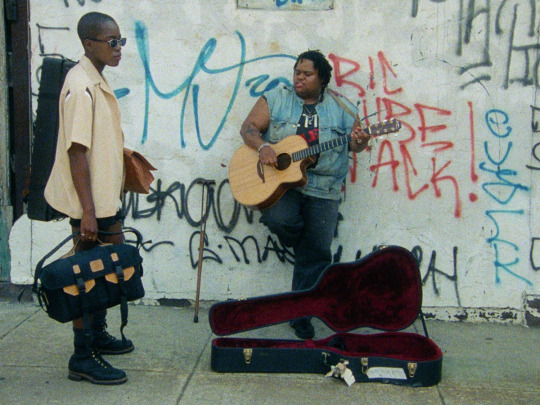
@theuncannyprofessoro
Ratnarajah, Anoushka. “Indisputably Real: Cheryl Dunye’s the Watermelon Woman.” Out On Screen, August 6, 2021. https://outonscreen.com/blog/2020/news/indisputably-real-cheryl-dunyes-the-watermelon-woman/.
Halberstam, Jack. Looking Butch: A Rough Guide to Butches on Film" In Female Masculinity, 175-230. New York, USA: Duke University Press, 1998. https://doi.org/10.1515/9780822378112-008
10 notes
·
View notes
Text
Beans Critical Analysis
youtube
Beans (2020), directed and co-written by Tracey Deer, is a semi-autobiographical film that follows Tekahentahkhwa (“Beans”) during the Oka Crisis (July through September of 1990). This violent conflict between a group of Mohawk people and the town of Oka in Quebec, Canada, in a way, began centuries before when the Mohawk (the most easterly section of the Iroquois Confederacy, located in southeast Canada and northern New York state) first settled in the area in the late 1660s1. However, this specific event arose because “The Pines” (indigenous land) and a nearby Mohawk cemetery were to be cleared to expand a golf course and build new condos. While not all residents of Oka supported the plan, the mayor refused to discuss and hear from the people. By the end, the crisis was successful in halting the development, but resulted in two killed and over one hundred wounded.
Tracey Deer, who was born and raised in Kahnawake (one of the Mohawk communities in the region of Oka), was 12 when she lived through this crisis. In the grand scheme of things, there are very few who could be entrusted to create a film on this specific event, and luckily, Deer is one of those. This won’t be a tale of the white savior entirely misunderstanding and misrepresenting colonization conflict! A nice change of pace.
Critical Race Theory
Critical Race Theory is at the heart of this film. It’s centered around an undeniably racialized conflict: First-Nations (and their supporters) vs. Colonizers. But, as mentioned previously, this is co-written and directed by a Mohawk woman who grew up in this community and experienced this conflict first-hand (the other writer is Meredith Vuchnich and it seems as though she is not indigenous). As we all know, relations between indigenous populations and settlers around the world are violent and oppressive, to say the least. Speaking for myself, I am most familiar with the North American history and from what I know, it is relatively representative of global indigenous genocide. So, what is so special about this film is that it is a coming of age story that takes place during a widely unrelatable historic moment and proves that the fight for sovereignty is not over. We’ve all been Beans: should she go to the private school she was accepted to? Are her new friends good for her? But also will her community succeed in the protection of their land? Deer sets the story during a somewhat recent conflict, proving the battle for sovereignty is not over as some might like to believe. In their article “Colonialism, Racism, and Representation: An Introduction,” Stam and Spence write that “[a]n ethnocentric vision rooted in North American cultural patterns can lead, similarly, to the ‘racialising’, or the introjection of racial themes into, filmic situations”2. I would argue that Beans is a functional execution of this idea: Tekahentahkhwa is just a pre-teen coming into a difficult world as she witnesses Canadians and their government fight against her existence and right to save her land. Stam and Spence also write specifically about indigenous populations, arguing that the “attitude toward the Indian is premised on exteriority”2 and the “besieged wagon train or fort is the focus of our attention and sympathy, and from this center our familiars sally out against unknown attackers characterized by inexplicable customs and irrational hostility”2 (2009, 759). While this is true in wider film history, I would argue that it is only partially true in Beans because Deer brings us onto the reservation and into Beans’ family. We’re not viewing the Mohawk community from the outside and watch them be victimized by white Candians. The viewer does not pity them and is more familiar with the attackers. However, it is clear that the hostility of the Canadians is irrational and wildly disproportionate (considering there should not have been a conflict in the first place because they were proposing to steal even more Mohawk land). Deer deftly navigates a relatable coming of age 90s story and the experience of indigenous women and populations in modern history.
Montage Theory
Another theoretical approach that this film utilizes is the montage. I love a good montage, especially if it makes use of archival footage of historical events, and Deer does this flawlessly in Beans. She intercuts the narrative with footage of the actual protests to provide context and transition during the film. If we follow Sergei Ėjzenštejn’s Soviet Montage Theory, I would argue that Deer employs a metric overtonal, not just tonal, montage, because “movement is perceived in a wider sense”3 and it’s “based on the characteristic emotional sound of the piece,”3 but “it is distinguishable from tonal montage by the collective calculation of all the piece’s appeals”3. Furthermore, these archival montages are “capable of impelling the spectator to reproduce the perceived action, outwardly,”3 meaning Deer is looking to evoke an emotional reaction as the viewer is confronted with undeniable, clear evidence of the vitriol and hatred of the white Canadians. Through it direct confrontation, Deer sets a emotional tone, lest the viewers forget that Beans is not simply a coming of age film: Tekahentahkhwa and her family are battling a centuries-long genocide, something that most pre-teens are unfamiliar with. The structuring and score of almost every single montage is identical, creating an overarching tone conveyed by her. Many of these montages are accompanied by the newscasters’ voiceovers and a tight, quick, string-heavy score, almost reminiscent of a horror film, which I believe sets the consummate haunting tone and reveals the “psychological turmoil of [the] characters”4.
Beans is an amazing movie about an event that I, hate to admit it, had never heard of. I loved how Deer balanced a coming of age story with a violent crisis that is simply one event in a long history of colonial oppression by white settlers. Viewing this film through the lenses of Critical Race theory and Soviet Montage theory enhances her storytelling abilities and allows the viewer to melt into Beans’ world.

Sources:
Ėjzenštejn, Sergei. “Methods of Montage.” In The Film Form: Essays in Film Theory, translated by Jay Leyda, 72-83. New York: Harcourt Brace Jovanovich, 1949.
Melinda, Meng. “Bloody Blockades: The Legacy of the Oka Crisis.” Harvard International Review, 30 June 2020. https://hir.harvard.edu/bloody-blockades-the-legacy-of-the-oka-crisis/.
Pudovkin, Vsevolod. “From Film Technique [On Editing].” In Film Theory and Criticism: Introductory Readings, edited by Leo Braudy and Marshall Cohen, 7-12. New York: Oxford University Press, 2009.
Stam, Robert, and Louise Spence. “Colonialism, Racism, and Representation: An Introduction.” In Film Theory and Criticism: Introductory Readings, edited by Leo Braudy and Marshall Cohen, 751–66. New York: Oxford University Press, 2009.
5 notes
·
View notes
Text
Good Luck to You, Leo Grande (2022) dir. Sophie Hyde

Good Luck to You Leo Grande (2022) is an unconventional romantic comedy, sometimes even described specifically as a “sex comedy,” directed by Sophie Hyde. The film consists primarily of intimate conversations and sex between Nancy Stokes, a neurotic older woman with little sexual experience, and Leo Grande, a charismatic young sex worker whom Nancy hires to explore her sexuality. It stars the incomparable Emma Thompson and Daryl McCormack, sure to be a star-on-the-rise, who bring to life a witty, provocative screenplay written by Katy Brand. In my video essay, I employed a narrative analysis to discuss the film’s unique four-act structure against the female sexual response cycle. I also observed Hyde’s subversive use of The Gaze in specific scenes of the film. In this analysis, I will use genre studies to compare Good Luck to You Leo Grande to the typical conventions of the Romantic-comedy, then discuss the racial representation of the film against the oppositional gaze.
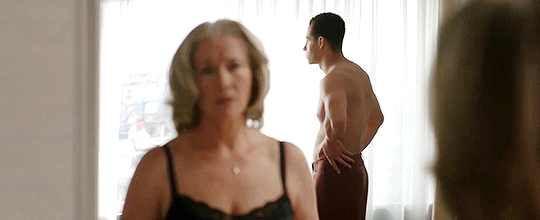
Subverting or Evolving the RomCom?
The label of RomCom does not perfectly describe Good Luck to You, Leo Grande, but it also doesn’t not describe it. On one hand, it is romantic, flirtatious, and sexy; it is also comedic, approaching the complex moral qualms of its subject matter with honesty and levity. On the other hand, these same moral themes and Hyde’s more artistic ambitions, such as setting most of the film in one location and the seeming lack of plot, have made it all too easy for viewers to label the film as a work of cinema more “elevated” than a typical RomCom. This assumption not only demeans the hundreds of films in the RomCom genre as somehow “low-brow,” but is also simply a misunderstanding of the romantic comedy as a genre.
In “Genre: The Conventions of Connection,” Leo Braudy boldly defends the cultural importance of genre films, a category which the romantic comedy falls into. He writes “Genre films, in fact, arouse and complicate feelings about the self and society that more serious films, because of their bias toward the unique, may rarely touch” (664). Romantic comedies, at their core, are a digestible way to attempt to make sense of the nebulous concept of love, and the complicated, vulnerable, and often unspoken topic of sex. Good Luck to You, Leo Grande, honors this true nature of the romantic comedy, complicating it one step further by discoursing sex work and daring to represent the desire of an older woman.
Thus the unique “couple” at the heart of Hyde’s film is what sets it apart the most from other RomComs. Popular, mainstream heterosexual romantic comedies nearly always star a man and woman who each absolutely epitomize the beauty standard of the time, and are either young and unstoppable or adults in their thirties with fun yet respectable dream jobs. On romantic comedies, Betty Kaklamanidou writes “One could even argue that the utopian rom com world is the ideal incarnation of a fantasy society where difference is celebrated rather than exorcized, and where every person can truly be equal to the next” (150). It can be said, then, that in this fantasy world, only the most conventionally beautiful people are deserving the most incredible experiences. Good Luck to You Leo Grand abandons this idea of a perfect, utopian world, and exists in a version of the real world. Though unmistakably beautiful, the simple fact of Nancy’s age makes her a subversive RomCom heroine; she is simply an ordinary woman who happens to be older. Leo, too, greatly complicates the squeaky-clean RomCom formula merely in his occupation of a sex-worker. Unlike a certain film known as Pretty Woman and others of its kind, Leo does not need to be “saved” from his lifestyle. In fact, it is Nancy who is framed as needing “saving” and revitalization (something which I will address more in a bit).
Finally, Good Luck to You Leo Grande subverts the romantic comedy in that it does not end as a romance at all! Hyde does not rely on some forbidden romance between Nancy and Leo to keep her film interesting. They begin their relationship as something strictly sexual then form a strong platonic, friendly bond, these two kinds of connection consistently distinguished from romance throughout the film. Still, their once-in-a-lifetime friendship follows the prototypical trappings of a RomCom romance: the strange meet-cute, the rough patch, the betrayal, and the reunion.
With all this in mind, I ultimately find that Good Luck to You Leo Grande is not a “subversive” or “elevated” RomCom, but simply a sign that female filmmakers are expanding the previously limited notions of what a RomCom can be.

Laughing Through Color Once Again
There is one unfortunate but crucial aspect of many RomComs that must be discussed within the text of Good Luck to You Leo Grande: the Other. Due to the fact that older women and sex workers are two identity categories which are almost never explored in depth, both stars of the film are relative “Others” within the RomCom canon. Still, the factors of race and class are largely at play within the dynamic between Nancy and Leo.
Leo is a biracial sex worker. Nancy is a white woman hiring Leo for her satisfaction, to feel “young” again. Racial difference is hinted at but not explicitly addressed in the film, though other forms of oppression such as class and misogyny are discussed at length. With these facts in mind, how is the film any different than so many others in which a character of color is used for the development of a leading white character?
I am not the person to provide a sufficient answer to this question. However, I do feel like this generalizing comparison can err on the side of implying that sex work is demeaning, unwanted work. This is a perception of sex work that the film spends so much time and dialogue trying to refute. Leo is proud of his work; he chose this line of work. There are also so many subtle, intersecting power dynamics at play between Leo and Nancy that make it difficult to decipher who is necessarily “in control” in the many sexual scenarios of the film. While Nancy hired Leo and has the ability to refuse his pay or give a negative rating, Leo has much more sexual experience than her, acting as her kind and willing guide as she is in an incredibly vulnerable state.
Still, I think the way that Leo is portrayed and the “colorblind” approach to his race seems to be reinventing the wheel of the “palatable” Other. As Kaklamanidou writes, “This deceptive colour blindness applies to an extent to the Hollywood industry which attempts to metamorphose its ethnic stars into profitable commodities by enhancing and taking advantage of their appealing ethnic characteristics and diminishing and/or defusing those traits that may emphasize
their ‘other’ side” (141). This seems to be a very fitting description of Leo, characterized as a “palatable” Black sex worker. Leo seems to be economically stable and presents himself as classy, presumably appealing to wealthier clients. He also had the ability to choose sex work. Would Leo be portrayed with the same amount of charm and sex appeal if this were not the case?
Finally, the portrayal of postmenopausal feminine sexual desire through the character of Nancy is, undoubtedly, revolutionary and subversive. The film has received several positive reviews from (notably white) older women who never thought they’d be able to see themselves in a RomCom. But the progressive representation in this film only extends to white women. As hooks writes, “Most of the black women I talked with were adamant that they never went to movies expecting to see compelling representations of black femaleness. They were all acutely aware of cinematic racism-its violent erasure of black womanhood” (310). Nearly thirty years after the publication of hooks’ piece, this sentiment has sadly changed very little, and Good Luck to You Leo Grande, though a positive step for some, is no exception.
Ultimately, there is no other film I can think of that is quite likeSophie Hyde’s Good Luck to You Leo Grande. Though it is definitely imperfect, it makes me excited for the future of RomComs.

4 notes
·
View notes
Text
Roundtable Presentation: Nope

In Jordan Peele’s 2022 film, Nope, the tranquil life of the Haywood family, who train horses for films, is disrupted when mysterious metallic objects fall from the sky, resulting in a tragic incident. Six months later, siblings Emerald "Em" and Otis "OJ" Haywood find themselves entangled in a series of bizarre events involving UFO sightings and the disappearance of their horses. As they document the inexplicable happenings and attempt to confront the alien threat, they uncover unsettling truths about a predatory organism named "Jean Jacket."
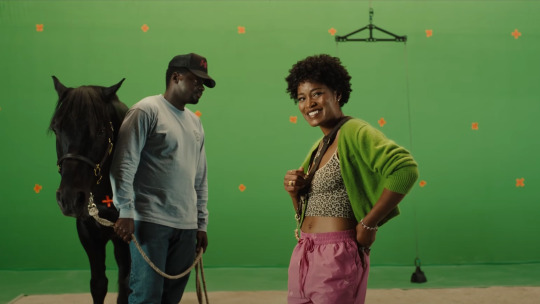
youtube
The film utilizes human technologies, including film production elements and surveillance gear, to juxtapose the mundane with the inexplicable. The arrival of the UFO disrupts the normalcy of the Haywood family's life, triggering a series of events that thrust them into an alien encounter. The use of cameras, both modern and analog, highlights the human need to document and understand the unknown, creating a dichotomy between the familiar tools of filmmaking and the extraordinary nature of the extraterrestrial presence.
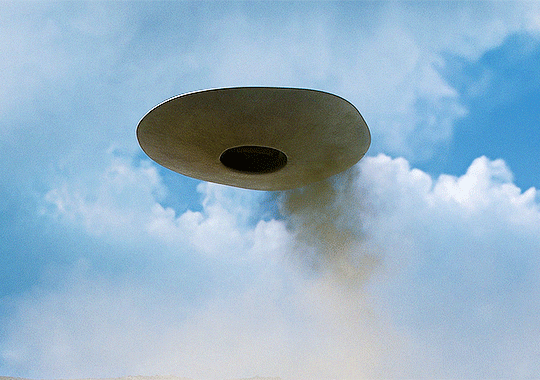
The portrayal of the UFO as a predatory organism presents a fascinating parallel to racial prejudices and discriminatory practices. Jean Jacket's selective attacks, particularly targeting those who directly look at it, reflect societal biases—highlighting the consequences of 'seeing' and being seen. The creature's ability to evolve into a larger form after encountering barbed wire and tarps hints at the biological reification, reminiscent of how prejudices can mutate and adapt.
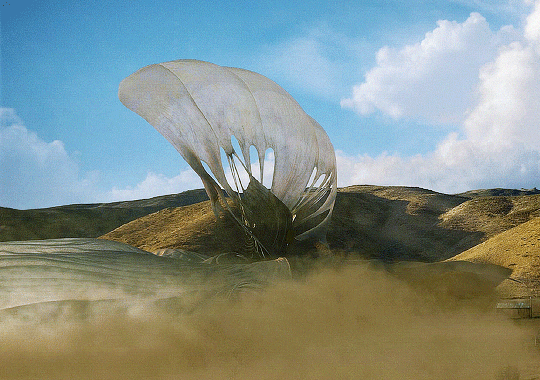
For the Haywood family, the ranch symbolizes their home—a place where they have a sense of familiarity and comfort. However, the intrusion of the UFO disrupts this notion of home, turning their sanctuary into a battleground. Simultaneously, Jupiter's Claim serves as another 'home' for some characters, albeit one that masks darker intentions and manipulative behavior.
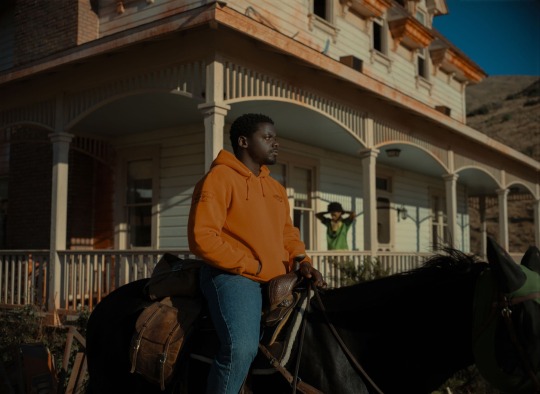
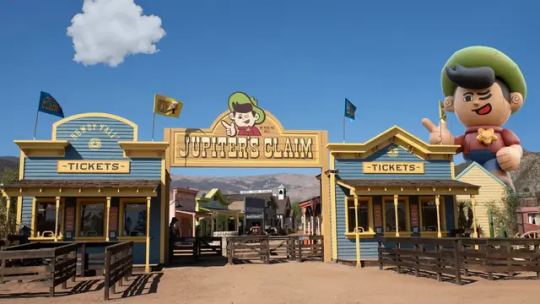
Technology acts as both a tool and a barrier in defining home and land. Surveillance devices and film cameras serve as tools to capture evidence, but they also become hindrances when Jean Jacket disrupts electronic devices. This disruption challenges the human-centric perception of control over their environment, blurring the boundaries between home, land, and the alien.
The interactions between characters reflect anxieties of identity, migration, and invasion. Jupe's exploitation of his traumatic past in the film industry mirrors the exploitation of vulnerability by those in power. The clash between the Haywoods and Jupe signifies the tension between indigenous inhabitants and opportunistic exploiters, reflecting broader societal anxieties related to racial mixing, invasion, and colonization.

Nope intricately weaves a narrative that explores the multifaceted layers of identity, belonging, and the disruptions caused by the intrusion of the 'alien.' It uses the interplay between human technologies, familial bonds, and the encounter with an otherworldly entity to delve into societal anxieties and the complexities of defining 'home' and 'otherness.'
8 notes
·
View notes
Text
They Cloned Tyrone

They Cloned Tyrone is a sci-fi mystery drama that follows the story of a drug dealer named Fontaine, who discovers a shocking conspiracy that his entire neighborhood is a part of. Starring John Boyega as Fountaine, Teyonah Parris as a sex worker, Yo-Yo, and Jamie Foxx as a pimp named Slick Charles, the film follows Fountaine and the gang as they try to figure out the truth while finding themselves sinking deeper into the rabbit hole of lies and secrets spread farther than they’d imagined. Fountaine, who was shot in a drive by shooting, came back the next day as if nothing had happened. Slick is shocked because he saw them murder him and immediately knows something is up. When they go to get Yo-Yo's help, they are led to an abandoned house where they find an underground lab where these scientist are running human cloning experiments. This is where they find Fountaine's dead body, the one that Slick had seen the day before.

Fountaine realizes that he is a clone and that the government is surveilling all of Glen, the fictional town in which they live. Slick finds a white powder in the lab which he figures out if being put in the chicken they eat, the hair relaxer at the salon, and in the juice they give out at the communion. Along with this, the music is also a factor of hypnotism against the black community.
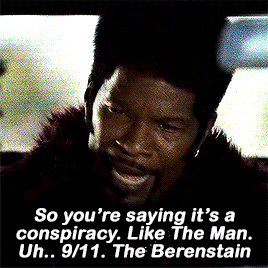
In the end it is revealed that the government has made clones of most people in the community of Glen, specifically people like Fountaine and Slick, who are drug dealers and pimps, in order to damage the well being of the people. It is revealed that these simulations are running in multiple cities around the U.S. including L.A, Chicago, and Detroit(all cities with majority Black populations). The ending shows that Fontaine, Yo-yo, and Slick are nowhere near finishing what they started. The movie deals with topics such as free will, community, and personal responsibility. They indirectly address issues that the government has set up against the black community, such as gentrification, the crack epidemic, and police brutality.
8 notes
·
View notes
Text
Roundtable Queries: Race in the Imaginary, Born in Flames (1983)

How does the film use human technologies and/or imagined alienness to establish different identities?
In spite of taking place in a dystopian future, there is no explicit depiction of advanced technologies. Born in Flames is set ten years after a peaceful revolution that has rendered America a Democratic socialist state. This supposed stride in progress has not stopped the oppressed from being marginalized. As a response to their oppressive conditions, a group of women-led community organizers take matters into their own hands with increasingly radical approaches. Writer-director Lizzie Borden's vision of the future suggests that dystopia might not be too different from present-day society.
youtube
How does film de-individualize and/or biologically reify alien characters that mimic racial prejudicial and discriminatory practices?
There are no aliens in this film, but alien identity is certainly a central theme. Women themselves are presented as somewhat alien in the ways they have been ostracized/signaled out as other. One such example is women being fired on the basis of sex. Different forms of labor are depicted from secretarial work to construction, showing the ways in which identity can be informed by one's contribution to capitalism (even if it has been repackaged as socialism).
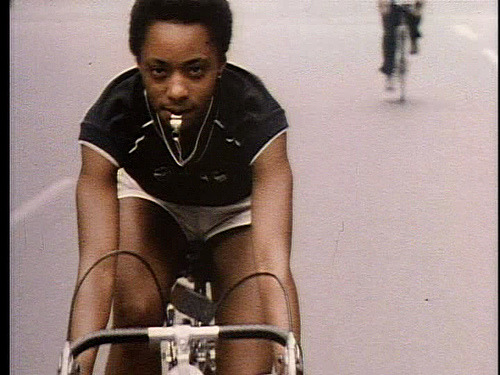
In what ways does the film depict home for the characters?
Home is shown through varying New York apartments. Outside of the tumultuous cityscape, these are places of respite. Food is served, community is engaged with, friendships are formed. I was reminded of multi-disciplinary artist Carrie Mae Weems' "Kitchen Table Series," which featured photographs of Black women in varying tableaus. Within Weems and Bordens visual landscapes, kitchens are portrayed as emblems of intimacy and identity.
How does technology inform definitions of home/land, indigenes, and aliens?
As I stated earlier, futuristic technology does not factor much into this particular film. That said, television/radio broadcasting are used to relay messages of political ideology and statehood. In one sequence, a women's group breaks into a news station and holds employees at gunpoint until they play a message about a Black community organizer who mysteriously died in prison. Born in Flames shows the power of mass media as a form of control and resistance.

In what ways do the character relations reflect anxieties of racial identity, racial mixing and/or passing, migration, and invasion and/or colonization?
As a magnum opus on intersectional feminism (before the term was coined), much of the film concerns the cultural forces that separate different groups of women. There is a group of white, female journalists who decry the "separatist" actions of more radical groups. In the end, it is unity amongst women that is the enactor of change, signaling a present-day call to action as broadcast from Borden's not so distant future.
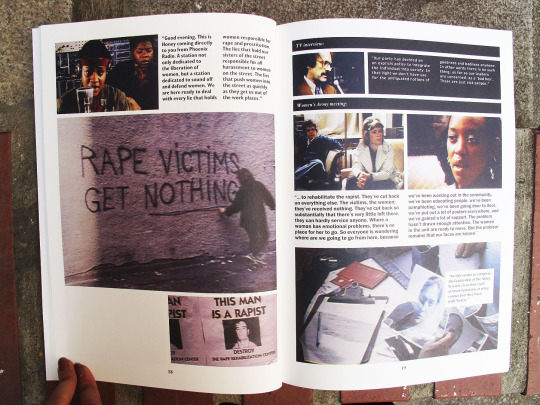
@theuncannyprofessoro
9 notes
·
View notes
Text
Roundtable 2: Race in the Imaginary and Mad Max: Fury Road (2015)
youtube
Mad Max: Fury Road is a 2015 film by George Miller that many hail as a feminist manifesto. It’s set in a barren wasteland, supposedly the not-too-distant future after the Water Wars and the depletion of oil. It follows Max after he’s captured by Immortan Joe’s War Boys and Furiosa’s attempt to flee and free Immortan Joe’s wives. It involves endless perfectly edited practical car chases, Nicholas Holt in so much makeup you can’t recognize him, and simply named characters and places like the “Bullet Farm” and “War Boys.”
It is clear from the very beginning that Immortan Joe is evil: his first scene involves close-ups of his battered and radiation-poisoned body. He is the alien because, according to Helen Addison-Smith's article, an “alien is easy to identify, and particular judgments about them are thus easily drawn from their appearance alone” (27). Several members of his “team,” like his son Corpus Colossus or The People Eater, also have emphasis put on their atypical bodies. Max and Furiosa, on the other hand, are not aliens: they’re conventionally attractive, able-bodied, recognizable humans. While Furiosa is missing her left forearm, she has a mechanical prosthetic and there is no attention drawn to this. Through the lens of Addison-Smith's article, it could be argued that Miller uses atypical bodies to signify alien- and otherness.
youtube
Another very important point to bring up is the setting of this film. Though never explicitly stated, it is set in the Australian outback, a country that is home to Aboriginal and Torres Strait Islander populations and was stolen by the British. As far as I know, Courtney Eaton (Cheedo the Fragile), whose mother is of of Chinese, Cook Island and Māori descent, is the only indigenous actor in the film. Addison-Smith addresses this phenomenon, writing that “The diasporic subject has a sense of belonging to a place where [they do] not live … it ‘is the myth of the (lost or idealized) homeland, the object of both collective memory and of desire and attachment, which is constitutive to diasporas’” (28). A large part of the film’s plot is Furiosa and The Wives returning to Furiosa’s “homeland”: The Green Place, home to the Many Mothers. But, for the most part, none of this land belongs to any of the characters in the film – they do not have a right to it and, at the end of the day, they caused the apocalypse that landed them in the Outback fighting for their lives.
@theuncannyprofessoro
7 notes
·
View notes
Text
Men in Black (1997)
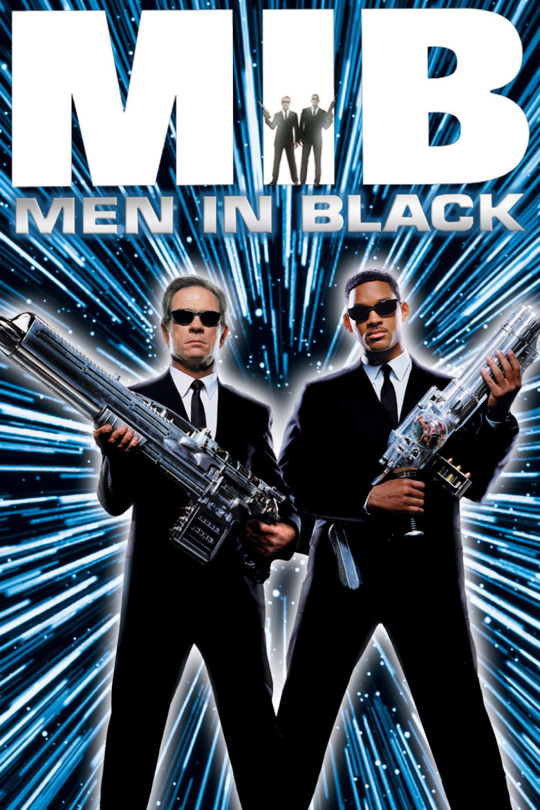
Men in Black details Agent J’s first mission for the eponymous government agency who regulates alien activities such as the immigration of said aliens to Earth and any threats they may pose. Agent J and his mentor, Agent K, remedy an alien diplomatic crisis and prevent the disintegration of Earth.
youtube
In Men in Black, many aliens pass for humans and have adopted disguises to help them live among humans. However, many of them still have their alien features that set them apart from the human population ranging from double pupils with gills, regenerative limbs, animalistic features, or being miniscule. Once revealed to be alien, however, it is impossible to unsee them as aliens and there is an uneasy horrificness at these strange creatures.

The main antagonist is a newly landed alien who is portrayed as quite volatile and hostile towards all humans. His species is literally referred to as “bugs.” He adopts a human skin that gruesomely decays throughout the movie and at the end, reveals his true appearance which is of a monstrous, huge cockroach like creature. This is the main alien that is consistently shown throughout the movie despite their depiction of other aliens as overall helpful, intellectual, and peaceful refugees. As a result, the audience focuses on the evilness and non belonging of aliens. This is similar to the typical reactions towards immigrants because current residents are not welcoming to new people especially people of color who are deemed not worthy of a place in the community as they are disgusting or contaminating (like the alien protagonist) and would ruin their current balance.
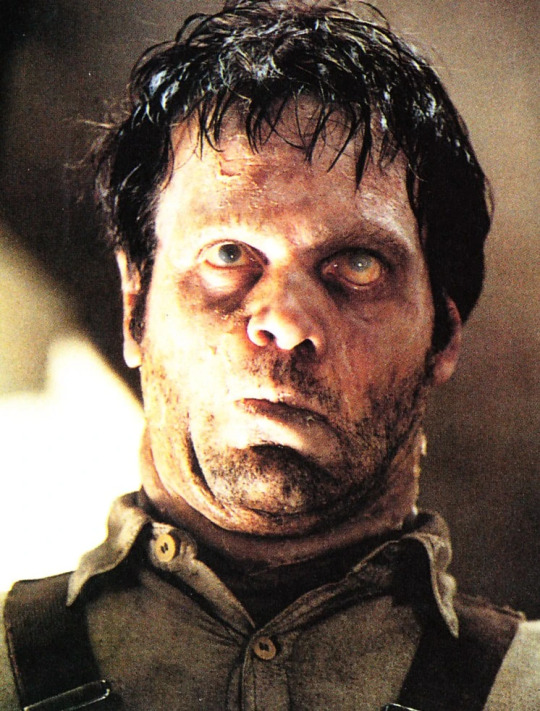

Citizens are also scared of immigrants having the same privileges and opportunities as them or even succeeding more than them, thus endangering their own chances which also applies to the aliens in the film. Most of the film’s aliens pass for humans which would freak out Earth’s human citizens as they are being threatened by these new unexpected populations. The Men in Black agency actually already has limited these aliens' success as the agency profits off the technology they confiscate (steal) from the aliens like Velcro. This is representative of how it is the aliens “teachings rather than their continued presence that is vital” especially because Earth is doing them a favor by providing the aliens refuge (Addison-Smith 31). The emphasis of the aliens seeking refuge on Earth is also an example of how the aliens are homelessness and have to rely on New York and its multiculturalism to blend in and survive. However, they are not completely at home and secure. Like human immigrants in our society, they have to build new lives in their new world due to their escape from their legitimate homeland and have to assimilate to the new society and current residents.

In addition to this migration and passing of aliens as humans (akin to racial passing), Men in Black explores alien invasion and how aliens can lead to the downfall of the very planet that protected them. Firstly, the whole crisis is caused by an unsanctioned alien who landed and started wreaking havoc the moment it got to Earth. This causes an alien species ship to come to destroy Earth, even though Earth was a refuge for one of their royalty. Throughout the film, there are also many aliens who have decided to flee Earth because of its impending doom and leave it to be destroyed even though it was a safe haven for them as refugees. This mirrors the uncertainty of the loyalty of immigrants to their new home or rather their self-preservation or old motherlands. However, it is understood because, like immigrants, aliens “are always overwhelmed numerically by humans” (Addison-Smith 32). As seen in the Men in Black agency, aliens are not in any leadership positions. The majority of the aliens who help the agency are treated very hostilely in return for their services and intel. Aliens are mistreated by the only human group that knows of their existence and could validate that existence. The aliens in Men in Black reflect the opinions of immigrants and refugees in regards to how their differences, their lack of belonging in their new land, and the lack of human empathy is emphasized.
@theuncannyprofessoro
9 notes
·
View notes
Text
District 9
youtube
"District 9" is set in an alternate version of Johannesburg, where a massive alien spacecraft hovers above the city. The extraterrestrial occupants, known derogatorily as "Prawns," are resettled into a government-controlled district. The narrative centers around Wikus, a bureaucratic functionary assigned to oversee the forced relocation of the aliens. When a mysterious alien substance alters Wikus's biology, he becomes a target for both the government and the aliens. Fleeing to the district he once oversaw, Wikus forms an uneasy alliance with an intelligent alien named Christopher Johnson.
How does the film use human technologies and/or imagined alienness to establish different identities?
The film employs a pseudo-documentary style, blending real-world news footage with filmmaking. The human technologies, such as military weaponry and surveillance equipment, highlight the power dynamics between humans and aliens. The alien technology, on the other hand, is portrayed as highly advanced and mysterious, emphasizing the contrast between the two species.
The imagined alienness is crucial in shaping the narrative's socio-political commentary. The physical appearance of the aliens, resembling insect-like creatures, contributes to their dehumanization. This visual otherness reinforces the xenophobic attitudes prevalent in the film's fictional world, drawing parallels to real-world issues of racism and discrimination.
How does film de-individualize and/or biologically reify alien characters that mimic racial prejudicial and discriminatory practices?
The film de-individualizes the alien characters through various means. Firstly, the aliens are collectively labeled as "Prawns," stripping them of individual identities and reducing them to a derogatory, dehumanizing term. Secondly, their living conditions in the segregated district contribute to their de-individualization, as they are confined to shantytowns, reinforcing a sense of collective suffering.
In what ways does the film depict home for the characters?
For the humans, Johannesburg represents their home, and the arrival of the aliens disrupts this sense of familiarity. The district where the aliens are confined becomes a physical manifestation of their displacement, a makeshift home reflecting their marginalized status.
How does technology inform definitions of home/land, indigenes, and aliens?
The powerful human military technology reinforces the idea of humans as the dominant kind, asserting control over the land. The alien ship, initially a symbol of hope for the aliens' return home, becomes a source of conflict as they all vie for control.
The film suggests that technology, whether human or alien, is a double-edged sword that can be both a tool for empowerment and a catalyst for conflict. The question of who controls the technology becomes central to the characters' struggles for autonomy and a sense of home.
In what ways do the character relations reflect anxieties of racial identity, racial mixing and/or passing, migration, and invasion and/or colonization?
The segregation of the aliens in a specific district echoes the forced segregation of racial groups in apartheid-era South Africa. The relationship between the human protagonist, Wikus Van De Merwe, and the alien Christopher Johnson challenges preconceived notions about racial identity and cooperation.
Wikus undergoes a physical transformation that blurs the lines between human and alien, reflecting the film's exploration of the fluidity and constructed nature of racial identities. The tensions between humans and aliens also mirror historical anxieties about invasion, colonization, and the fear of the unknown "other."
8 notes
·
View notes
Text
X-Men: Days of Future Past

In a dystopian future, mutants face extinction at the hands of the Sentinels, killing machines developed to detect the mutant gene and kill anyone that carries it. The Sentinels are part of the Sentinel program, created by Dr. Bolivar Trask in the 70s. The Sentinel program was approved following the assassination of Dr. Trask, which was carried out by Mystique. Following the assassination, she was kidnapped and her DNA was obtained and altered to advance the Sentinel program. With her powers of transformation, the Sentinels became more advanced killing machines, escalating the extinction of the mutants. The last of their kind, a small group of mutants fight off the Sentinels while Xavier and Magneto plot to alter history by preventing Trask’s assassination and Mystique's kidnapping. Kitty is able to send Wolverine’s consciousness back in time to 1973 to try and prevent Mystique from going after Dr. Trask. Wolverine wakes up in his younger body and he recruits some mutants to help him, among them Charles Xavier (Professor X), Hank (Beast), and Eric (Magneto). The plan fails, Dr. Trask survives the assassination attempt and he warns President Nixon of the danger of mutants and he approves the Sentinel program. During the assassination attempt, Hank and Mystique reveal themselves as mutants to the world and the Dr. Trask gets Mystiques’ DNA.
The different identities in the film are established through the mutant gene which only few people carry. They are singled out and labeled as “mutants,” separating them from the rest of humankind. Mutants hide their abilities and the fact that they are mutants in fear of prejudice and hatred. The events that unfolded in the first assassination attempt on Trask helped push a narrative where mutants are considered dangerous and must be eliminated, therefore getting the approval for the Sentinel Program. Mutants are now hunted by human technologies thanks to the prejudice of one man, his creations, and the narrative he pushed. Before the technology developed for the Sentinel program, mutants were able to live peacefully and unnoticed among humans.
In the final act of the film, Mystique once again goes after Trask at an event in Washington D.C. where the Sentinel program is unveiled. A fight breaks out between Xavier, Beast, and Wolverine who want to stop Mystique, and Magento who has taken over the Sentinels and intends to kill everyone at the event. Xavier persuades Mystique to spare Trask and she saves President Nixon from Magneto. This results in the Sentinel program being shut down, altering history and making Mystique a hero.
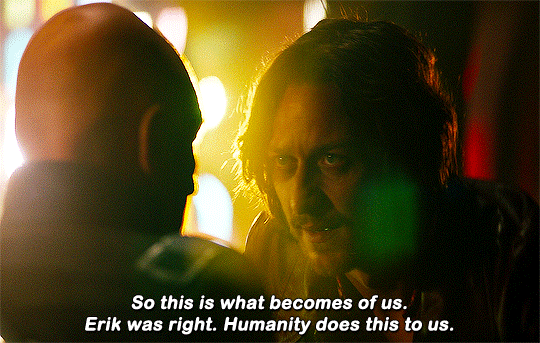

6 notes
·
View notes
Text
Contact Viewing Response

Contact, directed by Robert Zemeckis and released in 1997, follows the story of Ellie Arroway, played by Jodie Foster, who is an astronomer looking for proof of extraterrestrial life in space. Her dream began at a young age with the help of her father, who suffered a heart attack when she was nine years old but she persevered and continued to follow her dream in honor of him. As a young adult, Ellie started working for the SETI program (Search for Extraterrestrial Intelligence), but the program is threatened to be terminated by the President’s science advisor. Four years after starting to work for SETI, Ellie discovers a signal coming from the star Vega, and after further investigation, her team decides that this transmission should be strong enough to allow them to travel to Vega by penetrating the Earth’s ionosphere and sending them back to Earth. She decodes the signal and finds that it contains information about a machine that can be built to transport an individual between space. Human made technologies are utilized in this film, which are used to connect with the extraterrestrial world.
youtube
Even though this film stars a female lead, it does have a predominantly male, white cast, and one of the only characters of color is Rachel Constantine (played by Angela Bassett), who is the National Security Advisor to the President. She is the only other predominant female figure in this movie alongside the lead. Her role in the government’s involvement with the extraterrestrial contact mission and construction of the machine is very significant and she is a very authoritative figure within the film.

Contact brings up questions surrounding religion and science, as when controversy arises over the machine being built, religious extremists strongly oppose the mission due to claims about it challenging their faith and humanity’s place in the universe. The machine ends up being bombed on the day of its launch, preventing any sort of contact with extraterrestrial intelligence and unknown entities. Later, a second machine is secretly constructed in Japan and Ellie is chosen for the mission. She travels through multiple wormholes and finds herself on a beach similar to one from her childhood, where she sees an alien-like figure that appears to be her deceased father. In a way, Ellie’s home is with her dad, whether or not that is physically on Earth or on Vega, reuniting with him as a young adult in a strange sort of dreamy way. After reconnecting with him, she loses consciousness and finds herself back in the machine’s pod, with the mission team trying to contact her through her recording device. She tells them that she was gone for 18 hours, but they insist that all they received was static noise for just a few seconds.
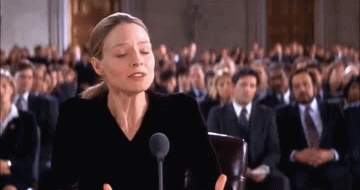
Despite doubt over the success of this mission, it is later discovered that although her recording device only recorded static, it was indeed 18 hours worth of it. She was continuously told she must have hallucinated and that because she did not have any physical evidence, it could not have been real. Often in the scientific field, women are often doubted and not taken seriously in their research and discoveries, so maybe this testimony would have been received differently had it been a man making these claims. In her testimony, Ellie claims that this mission impacted her humanity and everything she has ever known as a human being, which is a recurring theme of this film.
8 notes
·
View notes
Text
Strange Days (Kathryn Bigelow, 1995)

Strange Days (Kathryn Bigelow, 1995) is a science fiction thriller set in Los Angeles during the last two days of 1999. With the general consensus being that the end of the world is imminent: Los Angeles has devolved into a warzone of debauchery, violence, and crime. The film centers around ex-cop Lenny, who deals SQUID devices on the black market. SQUIDS are illegal devices that record peoples’ physical sensations and memories from their cerebral cortex onto a mini CD disc that allows them to be played back and experienced by anyone.

Lenny’s ex-girlfriend Faith’s friend Iris ends up recording police murdering black rapper and activist Jeriko One. The audience has only briefly been introduced to Jeriko via a speech he gives on television protesting the police state that Los Angeles has fallen into and pushing for peace. Since Jeriko’s character is not further developed before he is killed, he exists as more of a symbolic placeholder for all of the innocent black people that police have murdered. Iris is then chased by police but ends up getting the tape to Lenny before she is brutally raped and murdered. Lenny and his driver/bodyguard/friend Mace (who is also in love with him) then have to run from everyone who’s trying to kill them and Mace gets the tape of the murder to the police commissioner.
It’s interesting that even in this apocalyptic, end-of-the-world setting, racially motivated violence and police brutality are still prominent. Bigelow has discussed in interviews being motivated to begin production following impactful incidents in the 90’s such as the Lorena Bobbit trial and the Rodney King verdict and the riots that followed in 1992. Multiple of the characters in Strange Days are overtly racist (ie. the cops/murderers), but more subtle racism also permeates throughout. When trying to figure out how to get the video of Jeriko’s murder to the public, Mace and Lenny go to Lenny’s “friend” Max (who will turn out to be an awful person) for help. Max says simply that Lenny and Mace should not show the tape because there will be riots. In this moment Max is willing to silence the story of police murdering a black man to avoid causing a more than warranted uprising.
Bigelow seems to have intentionally sought to explore the intersection between race and gender as she stated that she created Mace’s character to examine "valuable connections between female victimisation and racial oppression." Mace proves to be stronger and more confident than Lenny; she repeatedly saves their lives and gets them out of tricky situations, yet she is still reduced to the role of his bodyguard/driver, and not given much of a story outside of Lenny’s world. At one point when they are in the car, she points out this dynamic saying “driving Mr. Lenny,” a reference to the film Driving Ms. Daisy (Bruce Beresford, 1989). Mace is additionally in love with Lenny because he stepped in and helped her take care of her son when the kid’s father was no longer around. Despite Mace being a strong, smart, and badass, black woman, her story is somewhat reduced to being the white man’s sidekick. She is also in love with Lenny for the entire film and when they eventually kiss at the end, it feels like she has now only existed to be his love interest.
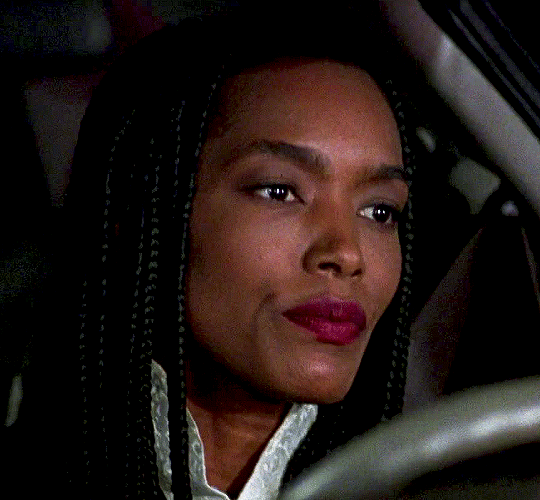
8 notes
·
View notes
Text
La Planète Sauvage (1973) Race in the Imaginary

René Laloux’s La Planète Sauvage (1973), an experimental animated science fiction art film, is as strange as it is dense with implications. The politically charged dissonance of psychedelia combined with the film’s Dali-esque surreal cutout stop-motion animation universe, realized by French avant-garde artist Roland Topor, has solidified this film as a seminal work of animation and a cult science fiction feature. The film is set in the hallucinatory landscape of the planet Ygam, where gargantuan blue humanoid creatures called Draags who rule the planet enslave humans (called Oms–a play on the French homme)--Terr, an Om who has been kept as a pet since Traag children killed his mother in his infancy escapes from his child captor and bands together with a band of radical escaped Oms to resist the Draag regime and impending genocide. The film is markedly allegorical for its use of imagined alienness to establish otherness and marginalization, and the techniques the Draag use to subordinate the Oms evoke historically significant racist discriminatory practices. Simply, it feels like a movie that is bluntly about something beyond what it appears to be, and the slight heavy-handedness of its messaging reifies its goal of engaging in racial discourse.

The racial politics of Fantastic Planet are strange in that the broadness of the trenchant sociopolitical commentary imminent in the dynamic between oppressor and oppressed has led critics to draw comparisons between the plot and the narrative around “animal rights” and the (mis)treatment of domesticated animals, yet the human-ness stitched into the film’s fabric positions it as a text specifically interested in the ways humans create divisions among themselves. The Draags and the Oms, despite their vast difference in physical size, do resemble one another and take on different forms of the corporality of a human being, and for this reason and many others, Fantastic Planet seems to be a film about how we could recognize ourselves in one another and still splinter into factions and enforce senseless violent domination.

Terr’s captor, a girl named Tiwa, has given him a collar to control him as he attends “school” with her, which involves her wearing a headset that transmits facts into her brain, and a defect in his collar inadvertently allows him to learn the same knowledge as Terr, knowledge he ends up using to save the Oms. Intelligence is the gateway to capital in Ygam and the Draags are highly intellectualized beings who pride themselves on their inborn wisdom and biological superiority that allows them to far outdo the meager Oms in their knowledge–the film comments on the complications of the racialized bioessentialist understanding of knowledge that would posit that being smart, and subsequently having value, is a fixed innate biological trait. The Oms navigate the world through cunning, outwitting the Draags practically in ways they might fail to do so intellectually and the Draags and Oms counter one another in the film on what “counts” as knowledge: the Draags favor transcendental meditative practices that imbue them with highly complex perspicuity, whereas the Oms argue that their knowledge is more useful for the ways it enables them to survive despite their circumstances. The Oms are made alien not only through their physical inferiority but also because they exist in a society that was not built for them. Fantastic Planet depicts an idea of home that is stringent upon exclusivity and requires technical superiority to belong; shoring up racial politics, Fantastic Planet deploys a social constructionist standpoint that colors these divisions as the products of structural forces benefitting only those who erected them.
youtube
13 notes
·
View notes
Text
Roundtable 2: Race in the Imaginary and Attack The Block (2011)

youtube
Attack The Block (2011), directed by Joe Cornish, is a sci-fi film that takes place in South London, and follows a group of trouble-making teenagers who must defend themselves and their apartment complex from extraterrestrial beings. The film begins with the group of teenagers attempting to rob an innocent woman, but their attempt is cut short when something falls from the sky, and lands in a nearby car. Once the woman runs off, the boys go to investigate the car, and stumble upon an alien creature who lunges at them. Originally, it seemed as if the villains were the teenagers, however the landing of the alien establishes the real danger of the story. After they take off the bandanas they had obscuring their faces, and we get a glimpse at their comradery, it's obvious that they are just children.
The boys' failed robbery from the beginning comes back to haunt them, as the woman, Sam, contacts the police to find them. Now, not only does the group have to run from aliens, but the police as well. As the group runs for their lives from aliens, two police officers manage to grab hold of the group's "leader", Moses, played by John Boyega. This is one of many times that the police chase after them, as if they are the aliens, rather than catching the actual aliens that are killing civilians. Here, a comment is being made on the fact that teenage boys of color, specifically Black boys are disproportionally sought after by law enforcement. Moses even goes, to say "I reckon, the Feds sent them anyway. Government probably bred those things to kill black boys. First they sent in drugs, then they sent guns and now they're sending monsters in to kill us”, showing that even in a world where rampaged aliens are killing humans, children of color are seen as the threat.

Most of the film takes place inside, or just outside of a giant housing project in South London, known as, “The Block”. We learn that this is where almost all of the boys live, and a place they feel is their duty to protect, often stating "nobody fucks with Block"(7:09). The building is akin to an eery, futuristic fortress, however it is a clear home for the boys. Though the boys have different personalities, and we get brief glimpses into their differing home lives, The Block marks a universal place of belonging for them. A place where identity is characterized by protecting one another from the impending threats of aliens and law enforcement, both of which have no regard for the boys as people. Though they are seen merely as thugs by law enforcement, the movie works to bring humility to them through giving depth to their personalities, and addressing the socioeconomic context of their lives.
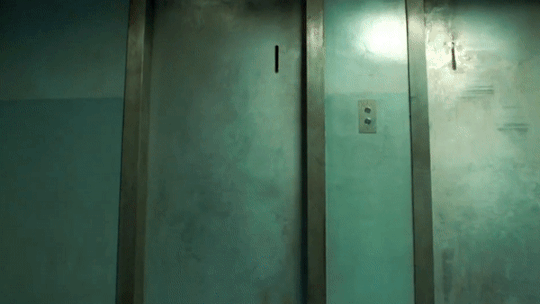
10 notes
·
View notes
Text
Roundtable 2: Race in the Imaginary and Attack The Block (2011)

youtube
Attack The Block (2011), directed by Joe Cornish, is a sci-fi film that takes place in South London, and follows a group of trouble-making teenagers who must defend themselves and their apartment complex from extraterrestrial beings. The film begins with the group of teenagers attempting to rob an innocent woman, but their attempt is cut short when something falls from the sky, and lands in a nearby car. Once the woman runs off, the boys go to investigate the car, and stumble upon an alien creature who lunges at them. Originally, it seemed as if the villains were the teenagers, however the landing of the alien establishes the real danger of the story. After they take off the bandanas they had obscuring their faces, and we get a glimpse at their comradery, it's obvious that they are just children.
The boys' failed robbery from the beginning comes back to haunt them, as the woman, Sam, contacts the police to find them. Now, not only does the group have to run from aliens, but the police as well. As the group runs for their lives from aliens, two police officers manage to grab hold of the group's "leader", Moses, played by John Boyega. This is one of many times that the police chase after them, as if they are the aliens, rather than catching the actual aliens that are killing civilians. Here, a comment is being made on the fact that teenage boys of color, specifically Black boys are disproportionally sought after by law enforcement. Moses even goes, to say "I reckon, the Feds sent them anyway. Government probably bred those things to kill black boys. First they sent in drugs, then they sent guns and now they're sending monsters in to kill us”, showing that even in a world when rampaged aliens are killing humans, children of color are seen as the threat.

Most of the film takes place inside, or just outside of a giant housing project in South London, known as, “The Block”. We learn that this is where almost all of the boys live, and a place they feel is their duty to protect, often stating "nobody fucks with Block"(7:09). The building is akin to an eery, futuristic fortress, however it is a clear home for the boys. Though the boys have different personalities, and we get brief glimpses into their differing home lives, The Block marks a universal place of belonging for them. A place where identity is characterized by protecting one another from the impending threats of aliens and law enforcement, both of which have no regard for the boys as people. Though they are seen merely as thugs by law enforcement, the movie works to bring humility to them through giving depth to their personalities, and addressing the socioeconomic context of their lives.

10 notes
·
View notes